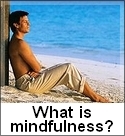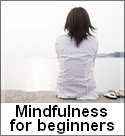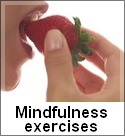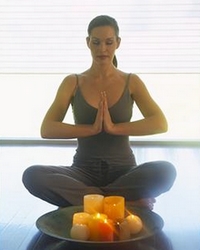Before we answer the question: How to do mindfulness meditation, let’s have a quick look at what mindfulness meditation is.
What is mindfulness meditation?
There are many types of and ways to meditate. Some will help you to relax, others will teach you to empty your mind or even to alter your consciousness.
Learning how to do mindfulness meditation will help us to be present in the moment we are in, just as we are, without having to change or be something we are not.
Mindfulness teaches us to stay in the moment, even if it is difficult or painful. It means facing the reality of a situation head-on without rejecting it or glossing over it to make it more palatable.
When you are present in the moment without flinching or wishing it to be something else, you gain the needed insight to know what needs to be done with more acceptance and less blame for yourself and others.
Mindfulness Quick Links:



How to do mindfulness meditation?
When exploring mindfulness and meditation, there are many different ways to approach it, but I will try to keep it simple, so that even a novice can try it for themselves. We will look at the physical, breathing and mind:
Physical

Find a quiet place where you won’t be interrupted. The easiest way to begin (because it is more comfortable) is to lay flat down or in a reclining chair, with eyes closed.
However, if you are used to meditating sitting up or this feels better to you then you can sit on a chair, on the floor or on a cushion. Adopt a posture that is straight but not uncomfortable.
Cross you legs in a way that is comfortable for you and won’t interrupt circulation. Put your hands on your thighs and close your eyes. If you prefer not to close your eyes, then with half closed eyes, direct your gaze downwards, towards the tip of your nose or a few meters in front of you, without trying to focus.
If your eyes are open just let you eyes rest there, without specifically looking or paying attention to what is there and maintain a soft focus.
Focus your awareness on your posture, the sensations of your body and the environment around you. When you attention starts wandering, gently return to what you were focused on.
Breathing
The easiest and most effect thing to focus on is the sensation of the breath flowing in and out of your nostrils or of your belly rising and falling.
Take note of the sensations as you inhale and exhale. Breathe normally since you want to pay attention to what is in this moment. If you suddenly find normal breathing difficult and you then try to control your breathing somehow, just take note of it and accept it. Just keep the focus on your natural breath and relax into it.
For many people and especially when you are beginning focusing on your breathing is generally the easiest. When you feel comfortable with that you can begin to include awareness of your body along with your breathing. It is easiest to start with the parts of your body that are touching the bed, floor or chair.
Mind
You will notice that your mind wanders and that you lose awareness of your breath and realise you are caught up in thoughts. Don’t fight it or try to control it. Take note of it and simply focus back on your breathing and/or your body and let the thoughts fade out by themselves. In this way they disappear from your awareness the same as your breathing did when it was replaced by thoughts.
This is a subtle but important distinction..you don’t need to control and stop the thoughts merely shift your awareness back to your breathing and let them fade themselves. This is the key to mindfulness and accepting what is, without controlling and doing this by maintaining a focus on something in the moment.
Some find it helpful to use a term like “I’m thinking” to make themselves consciously aware of it and shift their awareness back to their breathing and/or body in the moment.
When practicing mindfulness and meditation, you want to observe yourself being in the moment, but not actively take part in (it not caught up in analysis and/or emotional reactions).